“Sky Fighters, September 1934″ by Eugene M. Frandzen
Eugene M. Frandzen painted the covers of Sky Fighters from its first issue in 1932 until he moved on from the pulps in 1939. At this point in the run, the covers were about the planes featured on the cover more than the story depicted. On the September 1934 cover, It’s the Pfalz Triplane vs the indomitable S.E.5!
The Ships on the Cover
THE Pfalz Triplane was 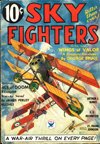 one of the neatest looking jobs among the number of multi-wing planes which all European countries experimented with during the late fracas Over There. The fuselage was exceptionally slick in proportion and line. If you can imagine the two top wings removed and the bottom wing having a much greater chord you will see a strong resemblance between this tripe of bygone war days and the Lockheed Sirius of modern times.
one of the neatest looking jobs among the number of multi-wing planes which all European countries experimented with during the late fracas Over There. The fuselage was exceptionally slick in proportion and line. If you can imagine the two top wings removed and the bottom wing having a much greater chord you will see a strong resemblance between this tripe of bygone war days and the Lockheed Sirius of modern times.
Those designers of a sixth of a century ago did some sweet visualizing far in advance of their time. If they’d have had engines as efficient as those of today to yank their stick and wire jobs through the clouds there’s no telling what the outcome of the air campaigns might have been.
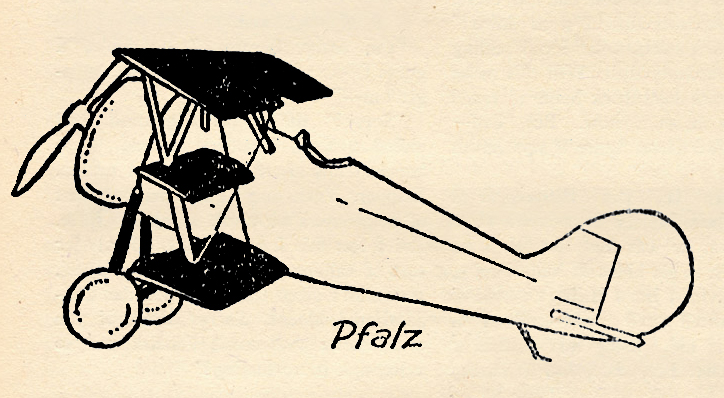
Three Winged Crates
But we’re not as interested in the fuselage as in those three wings which make our Pfalz a Triplane or Dreideckcr. In building this type of ship the hope was for greater efficiency in all ways. They got it in some and lost it in others. In using three instead of one or two wings the chord and span could be reduced. Then the tail assembly could be pushed up closer to the wings, giving compactness and maneuverability. A single interplane strut could be used on each side, instead of the conventional double struts. The Pfalz used a combination of V strut and straight single strut. The top wing did most of the lifting work as the lower wings had a very narrow chord.
The Nieuport, Sopwith, Albatross and Fokker firms experimented with the triplane idea. Fokker undoubtedly was influenced by the Sopwith “tripe.” Some other manufacturers even went in for quadraplanes, and not to be outdone, one stuck on five planes which made the crate look like a flying stepladder.
On the cover the Pfalz tripe in the foreground with the red belly has been tearing in and out of the ring-sights of the S.E.5. That fight started down low and gained altitude as the two ships circled and sparred with left and right guns.
Even Steven
The famous S.E.5 of British origin, one of their outstanding successes, has the edge on the tripe in many of their in and out maneuvers, but a triplane has a much reduced period of inertia in the horizontal plane; so therefore is able to slip from one dodging tactic to another quicker than the S.E.5. So it was about “even Steven” in this climbing fight.
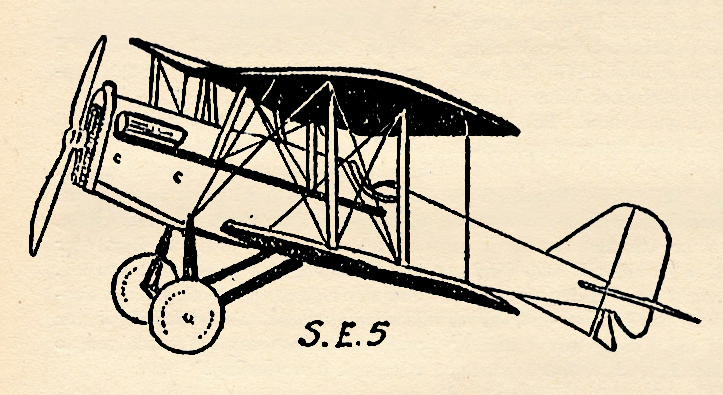
Suddenly another Pfalz tripe hove into the scrap with spitting Spandaus. Just about the time it looked like curtains for the S.E.5 her pilot flopped his ship into a trick skidding turn and sprayed a drizzle of slugs into the second ship. Down it went smoking, out of control. Not contented with his one victory he repeated his maneuver on the surprised Boche in the foreground Pfalz. One quick burst from the Vickers sent bullets thudding into the German pilot. He died instantly with his nerveless hands and feet still holding his plane in a climbing circle.
The S.E.5 pilot followed for a moment then eased his plane aside and headed for home. Once he turned, raised his right hand in salute as he watched the triplane, now a tiny speck far above, still gracefully climbing into the blue dome of heaven.
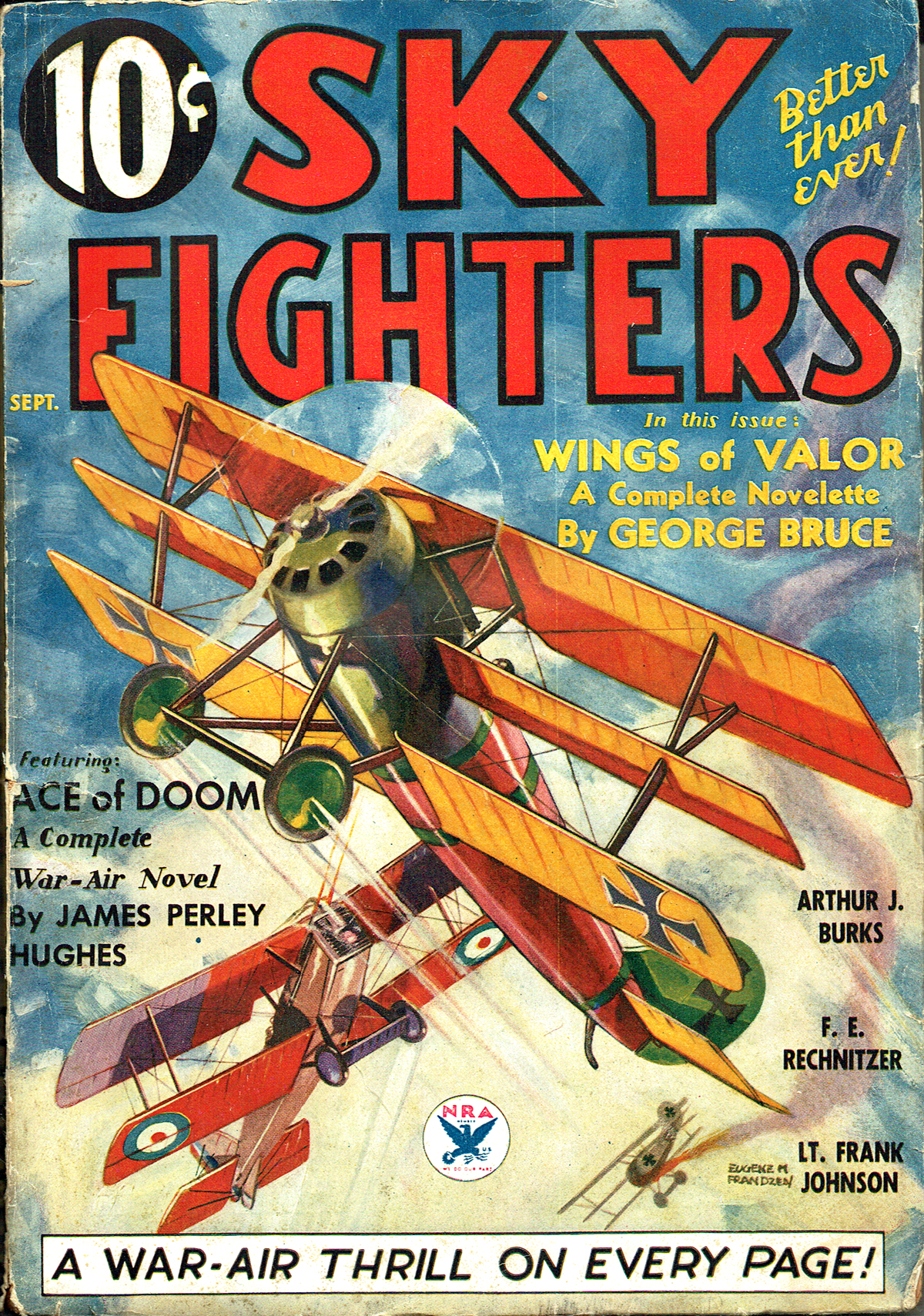
Sky Fighters, September 1934 by Eugene M. Frandzen
(The Ships on The Cover Page)
Next time, Mr. Frandzen features the Halberstadt C.L.2 and the Avro Spider!





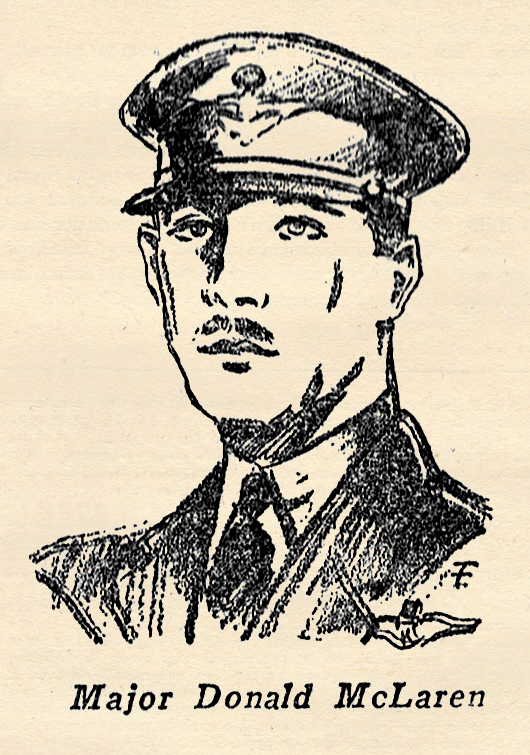 Donald McLaren was born in Ottawa, Canada, in 1893, but at an early age his parents moved to the Canadian Northwest, where he grew up with a gun in his hands. He got his first rifle at the age of six, and was an expert marksman by the time he was twelve. When the war broke out he was engaged in the fur business with his father, far up in the Peace River country. He came down from the north in the early spring of 1917 and enlisted in the Canadian army, in the aviation section. He went into training at Camp Borden, won his wings easily and quickly, and was immediately sent overseas. In February, 1918, he downed his first enemy aircraft. In the next 9 months he shot down 48 enemy planes and 6 balloons, ranking fourth among the Canadian Aces and sixth among the British. No ranking ace in any army shot down as many enemy aircraft as he did in the same length of time. For his feats he was decorated with the D.S.O., M.C., D.F.C. medals of the British forces, and the French conferred upon him both the Legion d’Honneur and Croix de Guerre. Oddly, just before the war ended, he was injured in a wrestling match with one of his comrades and spent armistice day in a hospital nursing a broken leg. He had gone through over a hundred air engagements without receiving a scratch. The air battle he describes below is unusual because almost 100 planes took part in it.
Donald McLaren was born in Ottawa, Canada, in 1893, but at an early age his parents moved to the Canadian Northwest, where he grew up with a gun in his hands. He got his first rifle at the age of six, and was an expert marksman by the time he was twelve. When the war broke out he was engaged in the fur business with his father, far up in the Peace River country. He came down from the north in the early spring of 1917 and enlisted in the Canadian army, in the aviation section. He went into training at Camp Borden, won his wings easily and quickly, and was immediately sent overseas. In February, 1918, he downed his first enemy aircraft. In the next 9 months he shot down 48 enemy planes and 6 balloons, ranking fourth among the Canadian Aces and sixth among the British. No ranking ace in any army shot down as many enemy aircraft as he did in the same length of time. For his feats he was decorated with the D.S.O., M.C., D.F.C. medals of the British forces, and the French conferred upon him both the Legion d’Honneur and Croix de Guerre. Oddly, just before the war ended, he was injured in a wrestling match with one of his comrades and spent armistice day in a hospital nursing a broken leg. He had gone through over a hundred air engagements without receiving a scratch. The air battle he describes below is unusual because almost 100 planes took part in it.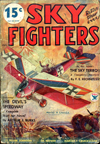
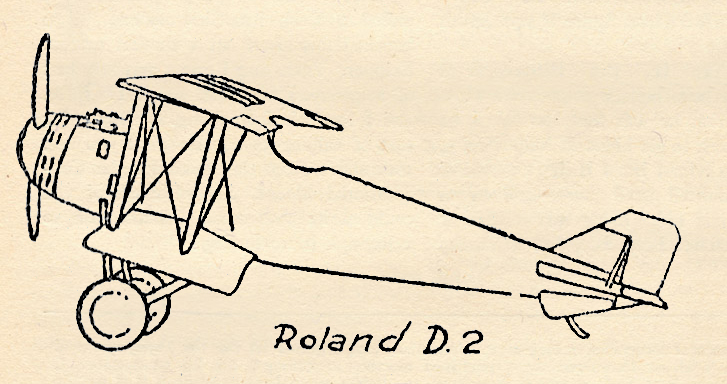
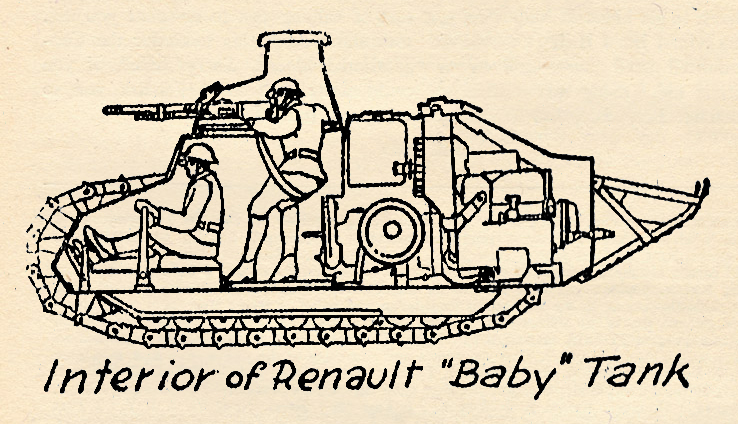
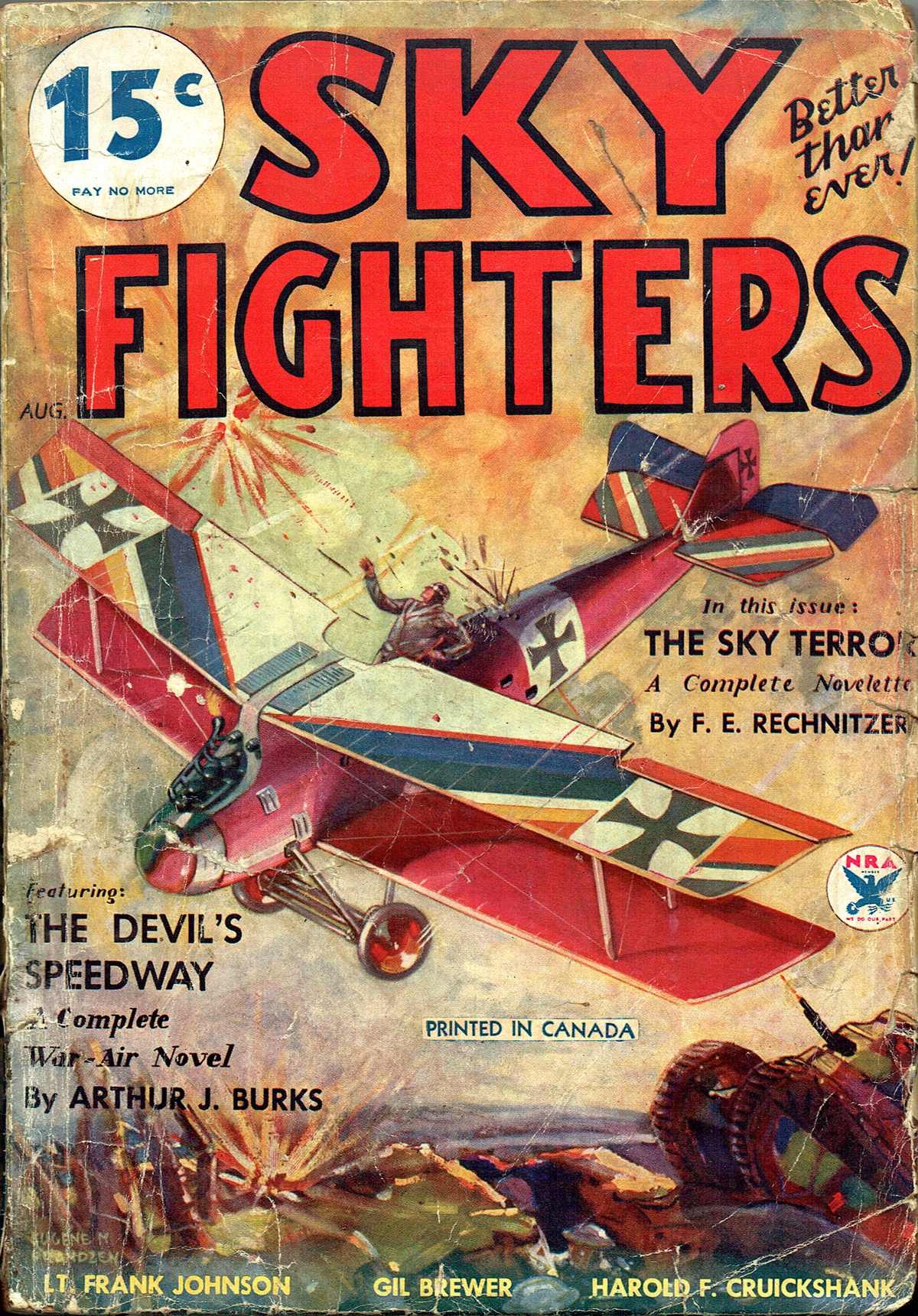
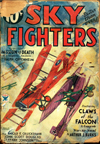



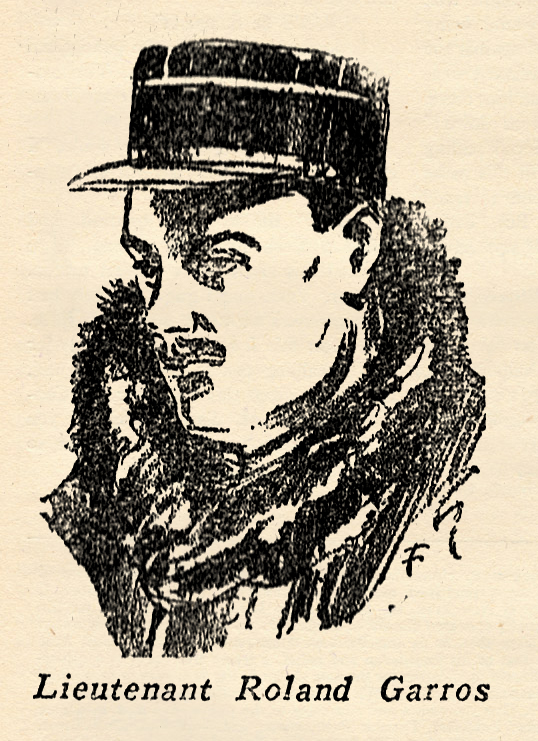 one of the world’s foremost airmen before the World War began. When the French army was mobilized, Garros joined his squadron, the Morane-Saulnier 23, just as it was leaving for the front. He built up a wonderful record for himself in respect to scouting.
one of the world’s foremost airmen before the World War began. When the French army was mobilized, Garros joined his squadron, the Morane-Saulnier 23, just as it was leaving for the front. He built up a wonderful record for himself in respect to scouting.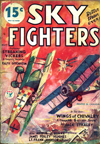

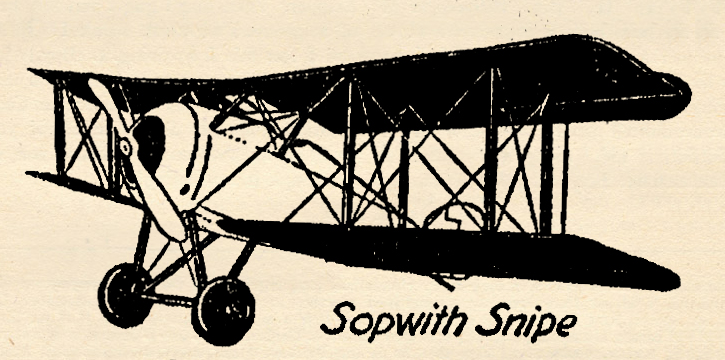
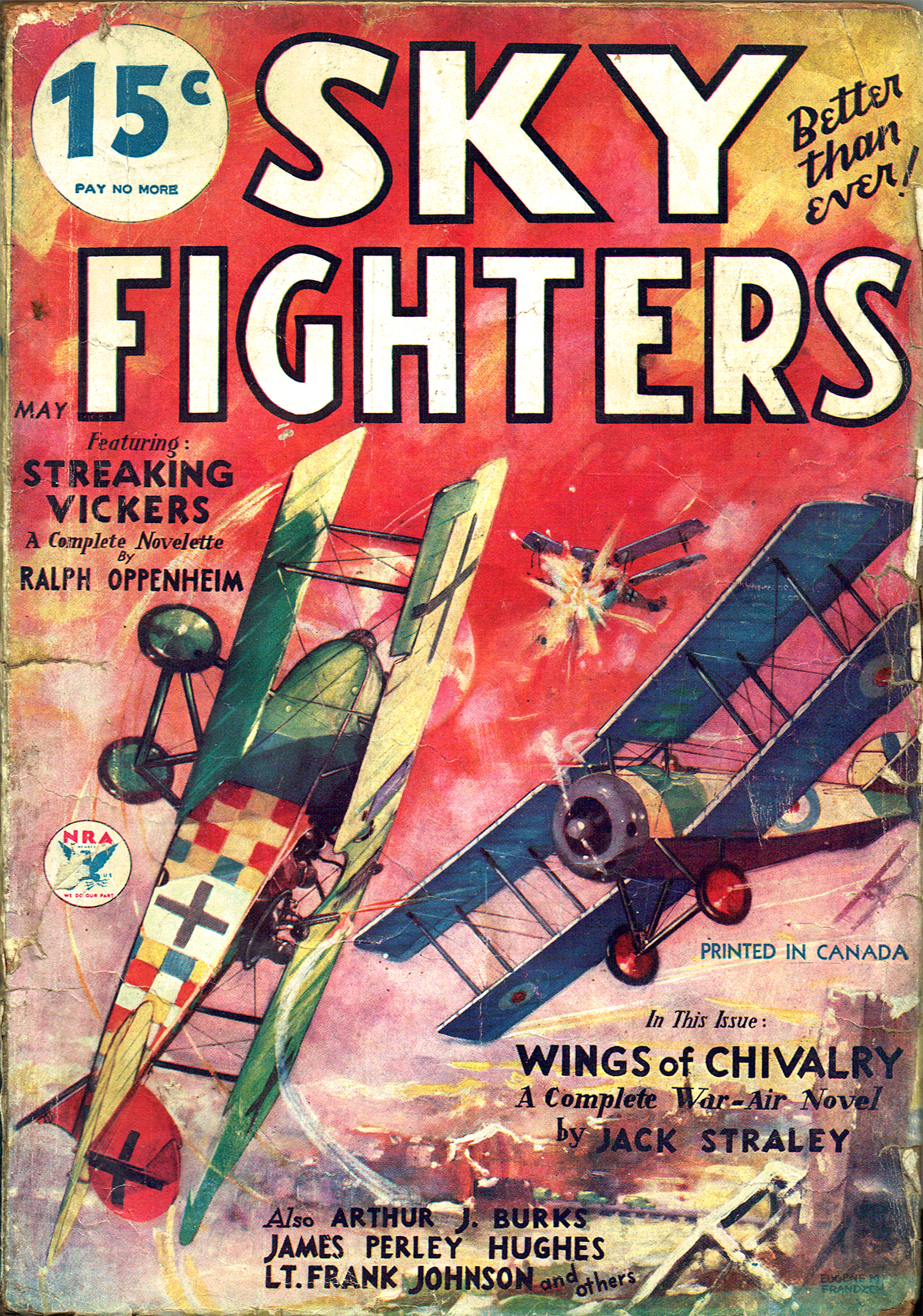
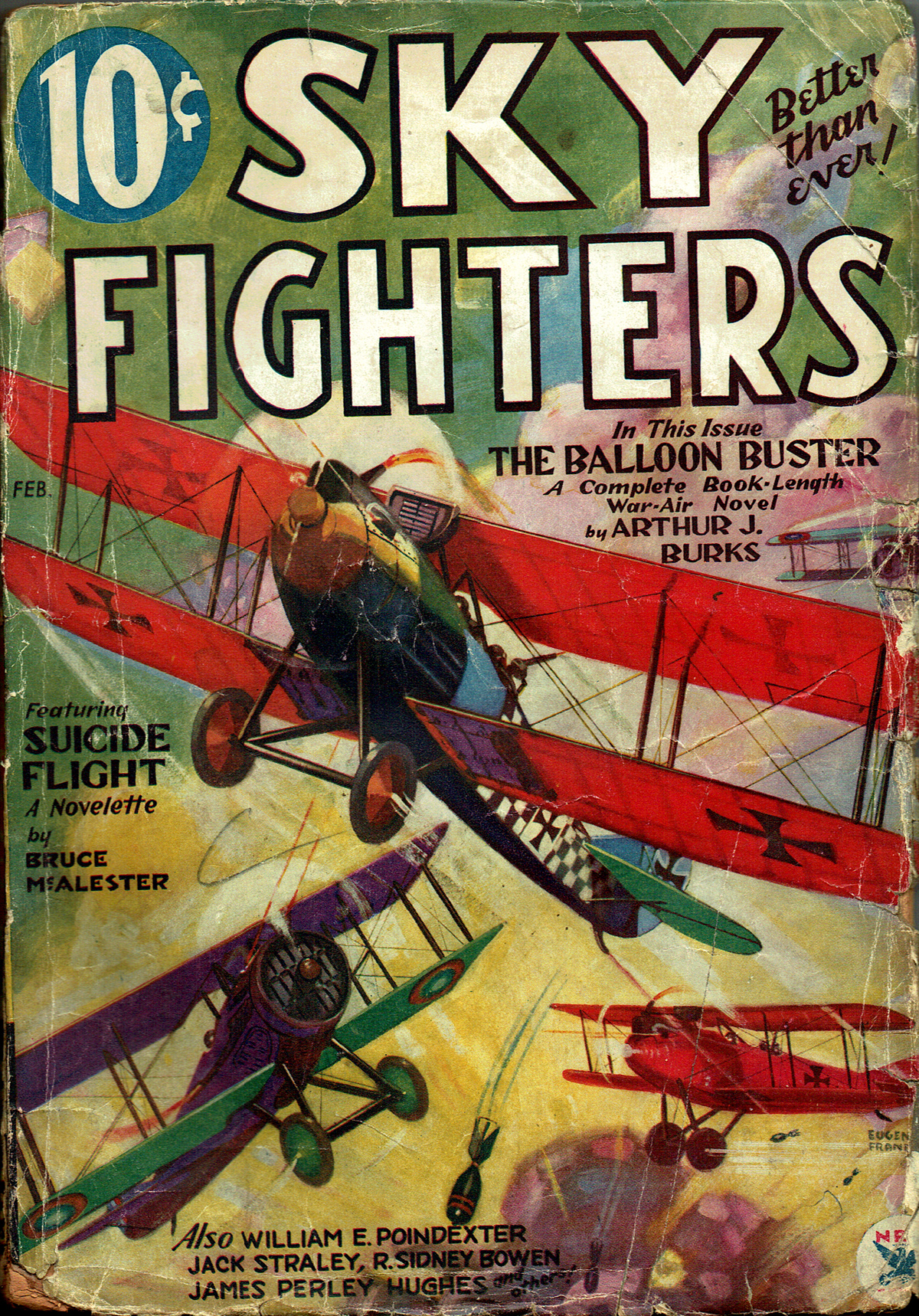 we have a tale from the anonymous pen of Lt. Frank Johnson—a house pseudonym. Sky Fighters ran a series of stories by Johnson featuring a pilot who who was God’s gift to the Ninth Pursuit Fighter Squadron and although he says he’s a doer and not a talker, he wasn’t to shy to tell them all about it. Which earned him the nickname “Silent” Orth.
we have a tale from the anonymous pen of Lt. Frank Johnson—a house pseudonym. Sky Fighters ran a series of stories by Johnson featuring a pilot who who was God’s gift to the Ninth Pursuit Fighter Squadron and although he says he’s a doer and not a talker, he wasn’t to shy to tell them all about it. Which earned him the nickname “Silent” Orth. 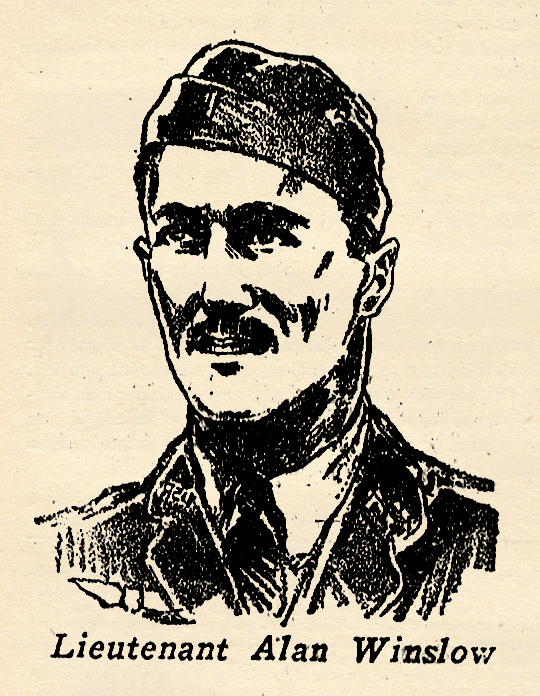 went oyer to France as a member of tho American Ambulance Section serving with the French Army. After America entered the war he was transferred to the American Army. When the American Air Service under command of Colonel Mitchell began definite duties on the Western Front, Alan Winslow had won his commission as a First Lieutenant and was assigned as a pilot in the 94th Aero Squadron, the famous “Hat in the Ring” outfit later made famous by Captain Eddie Rickenbacker.
went oyer to France as a member of tho American Ambulance Section serving with the French Army. After America entered the war he was transferred to the American Army. When the American Air Service under command of Colonel Mitchell began definite duties on the Western Front, Alan Winslow had won his commission as a First Lieutenant and was assigned as a pilot in the 94th Aero Squadron, the famous “Hat in the Ring” outfit later made famous by Captain Eddie Rickenbacker.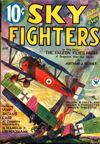
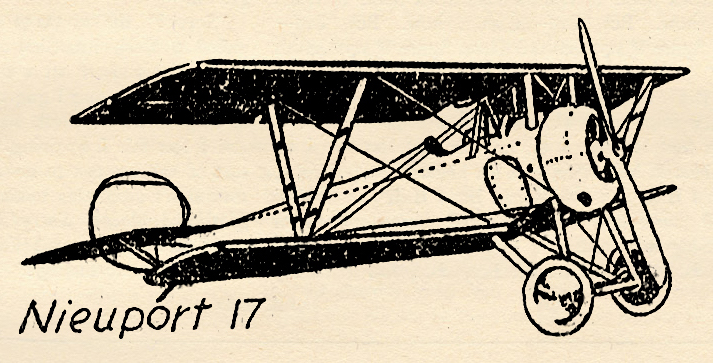

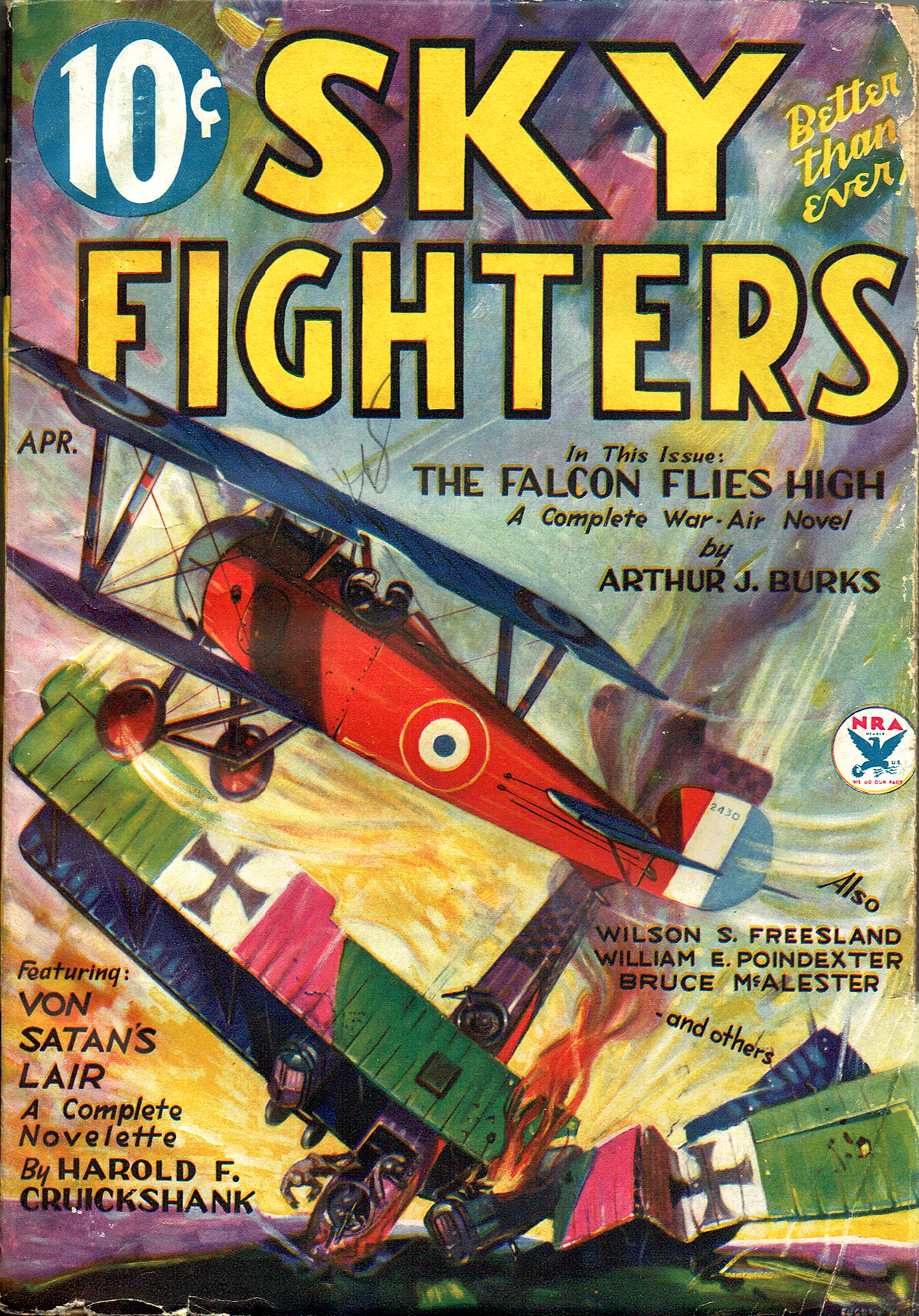
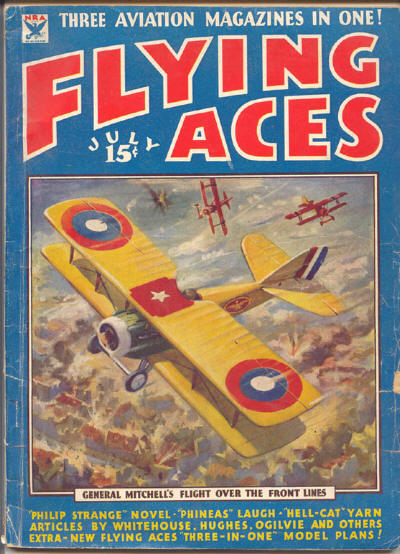 That sound can only mean one thing—that Bachelor of Artifice, Knight of Calamity and an alumnus of Doctor Merlin’s Camelot College for Conjurors is back and this time he’s fighting the war on two fronts—there’s a Boche Bat Patrol running riot in the Moselles and at the Ninth there’s a new recruit who wins every bet—that is until he comes up against the marvel from Boonetown, Iowa. From the July 1934 number of Flying Aces it’s “Hunbugs!”
That sound can only mean one thing—that Bachelor of Artifice, Knight of Calamity and an alumnus of Doctor Merlin’s Camelot College for Conjurors is back and this time he’s fighting the war on two fronts—there’s a Boche Bat Patrol running riot in the Moselles and at the Ninth there’s a new recruit who wins every bet—that is until he comes up against the marvel from Boonetown, Iowa. From the July 1934 number of Flying Aces it’s “Hunbugs!”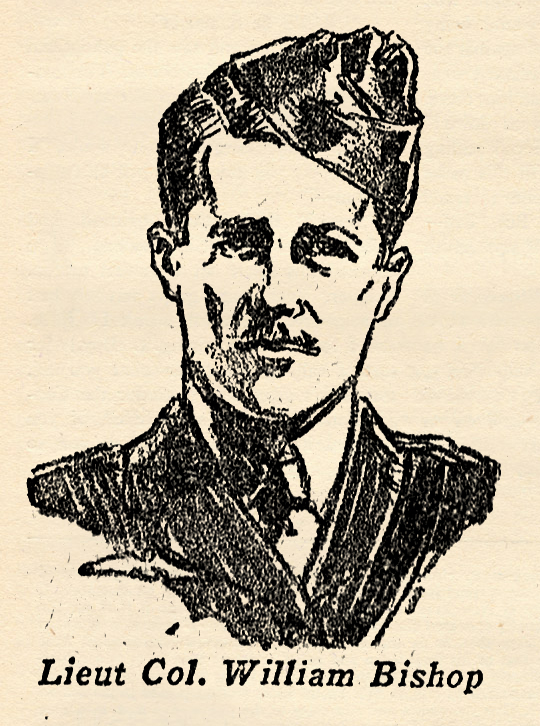 is one of the few great war Aces still living. And he probably owes his life to the fact that the British General Staff ordered him to Instruction duty in London while the war was still on. Bishop first served in the Second Canadian Army as an officer of cavalry, but tiring of the continuous Flanders mud, he made application for transfer to the Royal Flying Corps. He was first sent up front as an observer. When he went up later as a pilot he immediately began to compile the record which established him as the British Ace of Aces. He won every honor and medal possible. He was an excellent flyer, but attributed most of his success to his wizardry with the machine-gun. When the war ended he was officially credited with downing 72 enemy planes and balloons. The account below is from material he gathered for a book.
is one of the few great war Aces still living. And he probably owes his life to the fact that the British General Staff ordered him to Instruction duty in London while the war was still on. Bishop first served in the Second Canadian Army as an officer of cavalry, but tiring of the continuous Flanders mud, he made application for transfer to the Royal Flying Corps. He was first sent up front as an observer. When he went up later as a pilot he immediately began to compile the record which established him as the British Ace of Aces. He won every honor and medal possible. He was an excellent flyer, but attributed most of his success to his wizardry with the machine-gun. When the war ended he was officially credited with downing 72 enemy planes and balloons. The account below is from material he gathered for a book.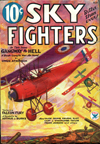

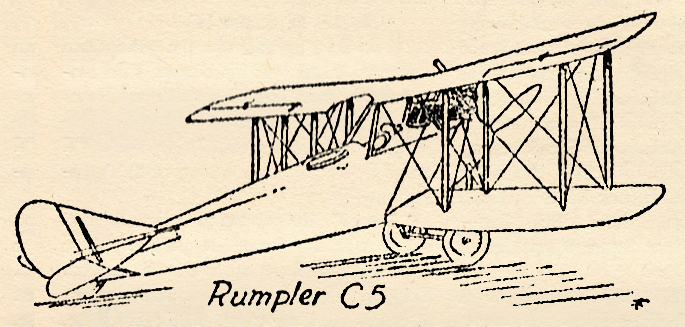
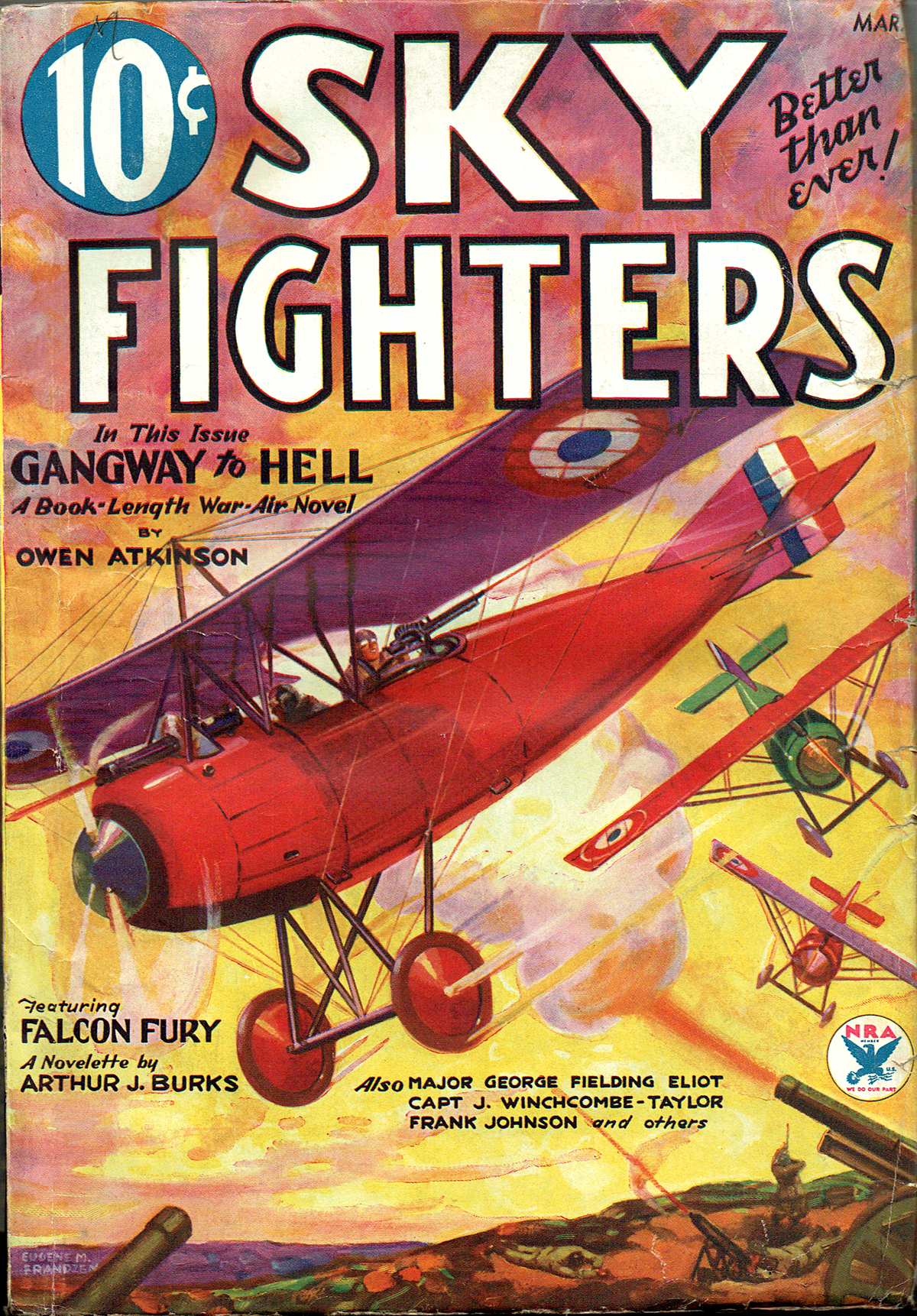
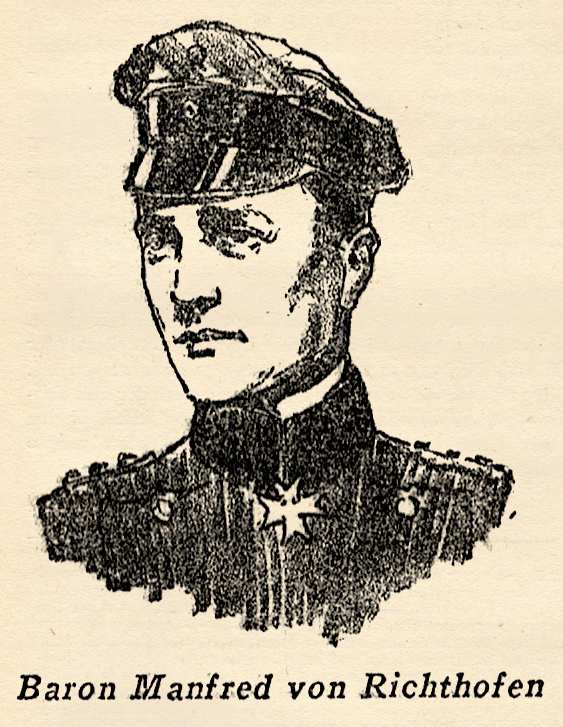 was the greatest of all the German flyers. He had more victories to his credit than any other battle flyer. He began in the Imperial Flying Corps, on the Russian Front. Soon afterwards he was transferred to the German North Seas station at Ostend, where he served as a bomber. Backseat flying never appealed to him, so he took training, soon won his wings, and was sent to join the jagdstaffel commanded by Oswald Boelke. After his sixteenth victory, he was promoted to Lieutenant and assigned to command a squadron. This became the Flying Circus, the most famous of all the German squadrons, the scourge of the western skies.
was the greatest of all the German flyers. He had more victories to his credit than any other battle flyer. He began in the Imperial Flying Corps, on the Russian Front. Soon afterwards he was transferred to the German North Seas station at Ostend, where he served as a bomber. Backseat flying never appealed to him, so he took training, soon won his wings, and was sent to join the jagdstaffel commanded by Oswald Boelke. After his sixteenth victory, he was promoted to Lieutenant and assigned to command a squadron. This became the Flying Circus, the most famous of all the German squadrons, the scourge of the western skies.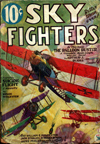
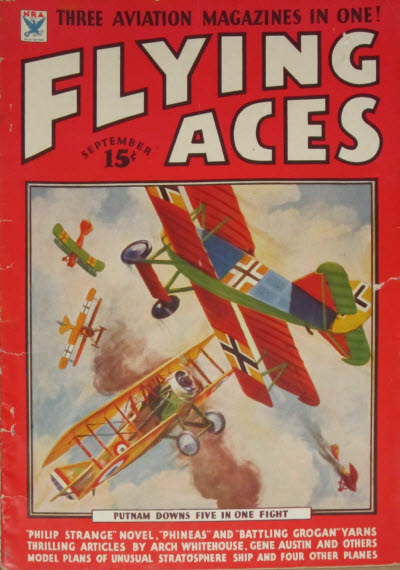 That sound can only mean one thing—it’s time to ring out the old year and ring in the new with that Bachelor of Artifice, Knight of Calamity and an alumnus of Doctor Merlin’s Camelot College for Conjurors—Phineas Pinkham. And it’s a festive one—It’s Major Rufus Garrity’s birthday and he’d like to keep it a secret, but it’s impossible to keep a secret from the Boonetown marvel!
That sound can only mean one thing—it’s time to ring out the old year and ring in the new with that Bachelor of Artifice, Knight of Calamity and an alumnus of Doctor Merlin’s Camelot College for Conjurors—Phineas Pinkham. And it’s a festive one—It’s Major Rufus Garrity’s birthday and he’d like to keep it a secret, but it’s impossible to keep a secret from the Boonetown marvel!